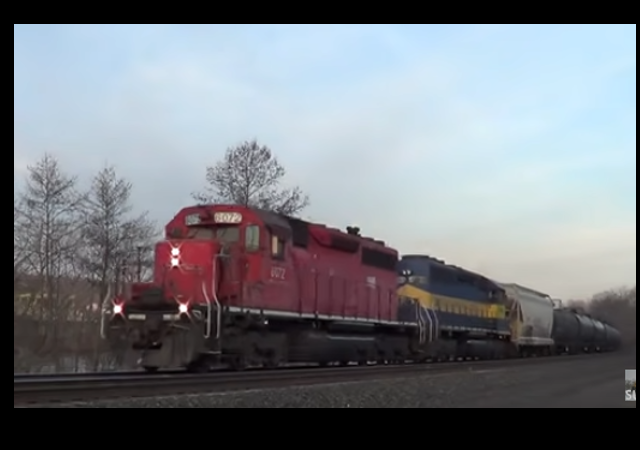Will a Rail Strike be the “Black Swan” of the 2022 Midterm Election?

Last July, I noted that a looming rail strike that could see over 100,000 railroad employees walk could severely stress the strained supply chain.
Should a strike occur, there are some supply chain statistics to keep in mind. About 1/3rd of American exports are transported to rail. Freight rail is part of an integrated network of trains, trucks and barges that ships around 61 tons of goods per American every year. Many of those goods include essentials, like energy and food.As of July 12, over 99% of union workers have voted to authorize a strike.
The Biden administration demonstrated its typical level of competence and effectiveness in dealing with this crisis. Which is to say, a rail strike is now poised to be a “black swan” event ready to lay an egg during the upcoming midterm election.
A potential nationwide freight rail strike is looming, threatening to cripple the U.S. economy ahead of the holiday shopping season and November’s midterm elections.Roughly 115,000 rail workers could walk off the job as soon as Sept. 16 if they cannot agree to a new contract with railroads.That’s the first day workers could legally strike after a White House-appointed panel released collective bargaining recommendations aimed at ending years of contentious negotiations.Five of the 13 unions representing rail workers have reached tentative agreements with railroads to enact the Presidential Emergency Board (PEB) recommendations, which call for 24 percent pay raises, back pay and cash bonuses.But the bulk of railroad workers belong to unions that haven’t yet agreed to a deal. It’s also unclear whether workers would vote to ratify PEB recommendations that don’t address their concerns about punishing hours and rigid schedules that make it difficult to take time off for any reason.
The administration is taking a break from Trump-Rage, as Labor Secretary Marty Walsh is meeting with the National Mediation Board to resolve the situation.
The involvement of the NMB and now Walsh himself indicates how seriously the Biden administration is taking the threat of a railroad strike, which could come as soon as next week. It’s also a sign that contract negotiations between the employers and the organizations that represent their roughly 150,000 workers are not going as well as the White House may have hoped.Negotiators will meet again with the NMB Thursday and Friday in hopes of reaching a tentative agreement before Sept. 16, when a so-called cooling-off period will end and unionized workers will have the option of walking off the job….If the parties cannot find common ground, Congress will have the option of mandating railroad employees to return to work. Some unions believe employers are holding out for lawmakers to do so.Even if negotiators can reach tentative agreements for all 13 unions by Friday, they would still need to be ratified by the unions’ respective members — a process that could take weeks and likely surpass the Sept. 16 cut-off. A strike at that point would be unlikely unless members vote the tentative agreements down.
CLICK HERE FOR FULL VERSION OF THIS STORY